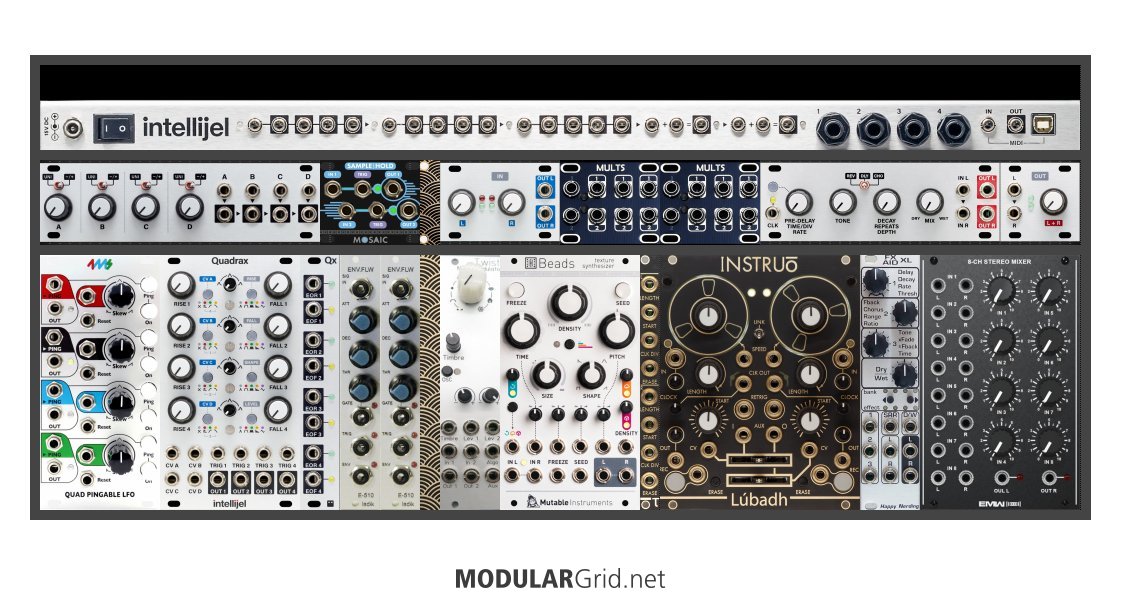Well, if you DO step up to something like a Palette 104, you'll have some room for modulation modules. Plus, the gate outs from the envelope followers can then work to control envelope generators, and you'd get something of an auto-wah capability with the Twist. I'll cobble up a quickie to show how that could work...like, say, this:

OK, in this version, I've added a modulation section and made use of the tile row. This one also allows a stereo thruput directly to the mixer.
TILES: QuadrATT first for mixing/inverting/offset generation, then there's a 2-channel sample and hold which you can trigger from the envelope followers. A blank next, to show the separation between modulation and audio...very useful for live use. Then we have the stereo input, and a pair of buffered mults...although these can do 1 to 6 splitting, which gives you a direct "thru" as noted, but which also feeds effect #5, which is a basic stereo delay/reverb/chorus device. And last, the stereo outs. This version utilizes the onboard 1/4" jacks, so any mic preamps needed will have to be external...not a bad thing, really.
ROW: In this version, we start with a 4ms QPLFO...a quad LFO that can run from audio rates all the way down to periods of as long as 70 minutes or so. VERY useful for slowly-evolving effects. Next is an Intellijel Quadrax/Qx pair for four envelope generators, plus the Qx's interesting EOF/EOR trigger capabilities. You can fire the Quadrax from the envelope followers' gate outputs, plus you can use the followers' triggers to "ping" timings for the QPLFO. Note also that you can now mix the extracted amplitude signals via the QuadrATT for a L-R "composite" if you like. The blank panel does the same as in the tile row, and everything's the same as the 84 hp version until you get down to the end, where there's an 8-in stereo mixer from EMW (I suggest ordering direct with them, btw) that's considerably easier to use than the Happy Nerding one.
And yes, I know that the Palette 104 has its own mults and adders. But you'll want those for control routing and combination, whereas the After Laters in the tile row are solely for audio splitting for the five audio processors and your dedicated dry pair. So, the "core" is the same as the 84 hp version, while this gives you numerous modulation options that weren't possible in that smaller cab.

